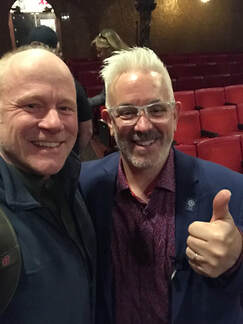 Curt and Dr. Gathright Curt and Dr. Gathright Dr. John Gathright was an author and motivational speaker, not a tree climbing expert. He wrote a book about pursuing your dreams, and at one of his book signing events, he was approached by a woman. Speaking from her wheel chair, Toshiko Hikosaka told him of her dream to climb the world’s largest tree and that she wanted him to help her. He was not a tree climber and had no idea how to climb such a tree, but he wanted to help her achieve her dream. Three years later, Gathright and Hikosaka reached the top of a giant sequoia. At 63 years old, she was the first paraplegic to climb a tree to this height. Her climb that day culminated in triumph, wonder and exhaustion. They spent the night in the top of that 243-foot tall tree, on the branches, under the stars. Just as that day in the bookstore had set the ball rolling for their 3-year journey, the climb to the top of the sequoia was the beginning of the next chapter. Upon returning to Japan, demand for Gathright’s tree climbing adventures inspired him to cut his own path forward. Given there were no tree climbing schools in the country at that time, he had to start at the very beginning. It was a delight for me to be able to attend a presentation of Dr. Gathright recently. He is a pioneer in using recreational tree climbing in therapeutic and rehabilitation programs, and I have been inspired by his work for a number of years. To hear him tell his story of the legwork he had to go through was amazing. Sometimes It Is About The Numbers He had to find research that supported his idea of establishing tree climbing as an effective and legitimate form of therapy. No research existed at that time, therefore he realized his next course of action was going to have to be the pursuit of his PhD studying and testing his hypothesis. His doctoral thesis looked at the physiological and physical differences in individuals between their climbing living trees and climbing a concrete structure. In both instances, participants were climbing to elevated heights and performing similar tasks. In analyzing the data, there were clear differences between the 2 experiences. When climbing trees, participants experienced less pain and fatigue, experienced greater vitality and clarity of mind, and reported feeling a greater feeling of self-worth versus when they were climbing the concrete structure. Tree climbing had produced an increase in positive emotions and reduction in negative emotions. His further studies revealed and measured reductions in participant levels of stress, tension, anxiety, depression, and anger after climbing trees. Not only did his research show the positive effects of tree climbing, it revealed that it wasn’t simply the climbing that was providing the benefit. There was a marked enhancement of the effects when the participants were climbing trees. Gathright had provided the scientific basis behind his TreeHab and Tree Therapy programs. Meet Your Therapist My first ascent of a tall tree early in my career had a profound impact on me physically and mentally. My muscles enjoyed the physical exertion, but I was exhausted. I was energized by the height I had reached, at the same time nervous. Through all of the hormones flushing through my body, I found mental clarity and focus. I was energized, yet I was at peace. I never measured the effects to confirm in what ways and by how much climbing trees changed me, yet I walked away from that climb relaxed and inspired. And every climb since. Over 20 years later, I came across the research of Dr. John Gathright that identified and quantified the effects of climbing trees that I had personally experienced. From its origins in 2000, TreeHab has worked with thousands of children with physical disabilities and emotional trauma. Gathright and Tree Climbing Japan have helped over 300,000 people of all abilities discover their inner tree-climber. As I listened to him share his stories of people he has worked with over the years, I was reminded of those who have touched me during my journey thus far. Tree Climbing Touches Lives I am involved with tree a climbing program for urban youth and people who do not have the resources to leave the concrete and asphalt landscape at will. Counselors and therapists utilize our climbing experience in their dealings with children facing emotional trauma, such as that related to the loss of a parent. It was interesting to hear him speak of programs developed for people with autism and ADHD. While the experience and benefits of tree climbing have a profound impact on these participants, it appears that TreeHab is also having a promising impact on breaking down the stigmas associated with them in his community. I have seen the benefits first hand in dealing with a variety of people from all walks of life and backgrounds. While the majority of our climbers may not fall into any of these categories, every one of us benefits from the same effects that tree climbing provides. His words brought into focus for me that we each have our own inhibitions, insecurities, and unique qualities. Each of us may be at a different point in our journey through life, come from different backgrounds and face our own challenges; but, every one of us can reap the benefits of time in the trees.
0 Comments
|
AuthorAs a G.O.T.C. Recognized Master Instructor & Facilitator, I.S.A. Board Certified Master Arborist, and T.C.I.A. Certified Treecare Safety Professional, Curt has spent over 30 years dedicated to the study and care of trees. Categories
All
Archives
May 2024
|
|

 RSS Feed
RSS Feed
